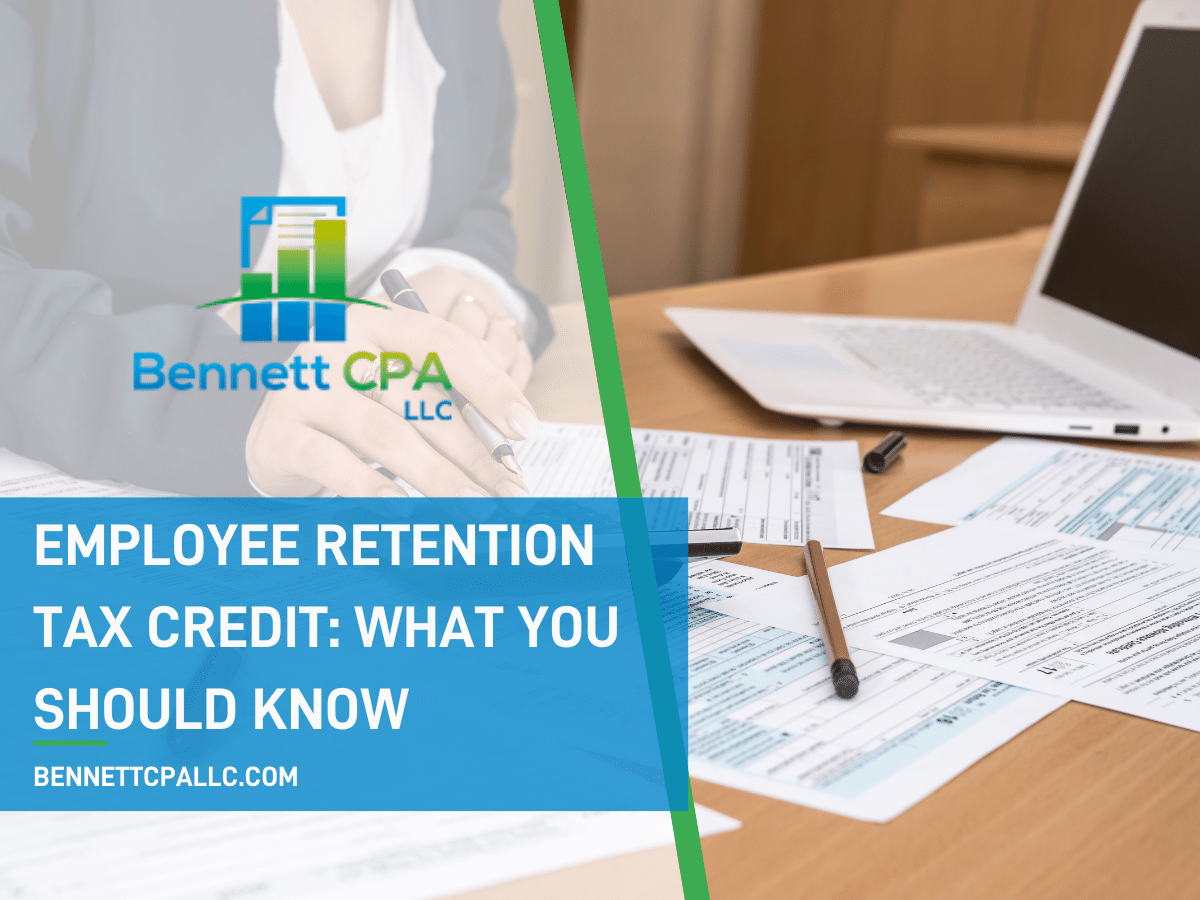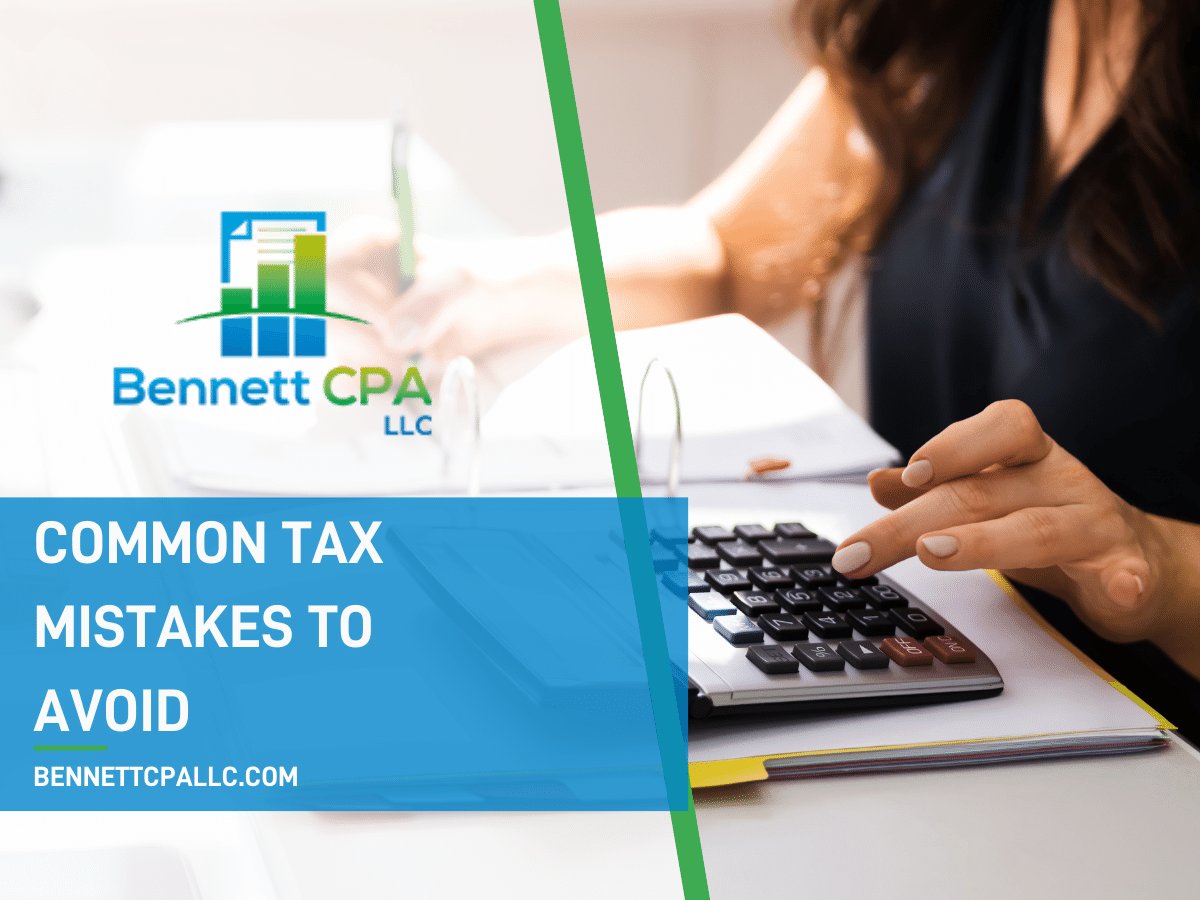While the Employee Retention Credit (ERC) was ended in 2021 by the Infrastructure Investment and Jobs Act, businesses can still retroactively claim the tax credit on their 2021 tax returns. As a business owner, it is crucial to be aware of these changing tax laws, but it can be difficult to keep track of the ever-changing tax regulations on top of running your business from day to day. At Bennett CPA, Merrill Bennett is a professional tax preparer located in Colorado Springs. As an experienced certified public accountant, Bennett can provide you with tax knowledge so you can better understand the particulars of your business taxes. When it comes to filing your taxes this year, here is what you need to know about the Employee Retention Tax Credit.
What is the Employee Retention Credit?
The ERC is a refundable tax credit for a percentage of qualified wages that businesses or tax-exempt organizations paid to employees.
The ERC was first introduced by the Coronavirus Aid, Relief, and Economic Security (CARES) Act in March 2020. The CARES Act was passed to offer financial assistance to businesses that were impacted by the COVID-19 pandemic. The ERC was introduced in the CARES Act with the goal of encouraging businesses to keep their employees on payroll during the pandemic.
Since the ERC was first created, the tax credit has been limited by the Infrastructure Investment and Jobs Act and expired at the end of 2021. The Consolidated Appropriations Act (CAA), which was enacted in December 2020, and the American Rescue Plan Act (ARPA) that was passed in March 2021 amended the tax credit by extending the credit through the end of 2021.
With the latest amendments from the Infrastructure Investment and Jobs Act, the ERC is now limited to wages paid up to the third quarter of 2021. Any wages paid to employees after September 30, 2021, are ineligible for the tax credit.
Who qualifies for the Employee Retention Credit?
To be eligible for the Employee Retention Credit, you must be a private sector business or a tax-exempt organization of any size. You also must have operated during any calendar quarter in the years 2020 or 2021. Governmental employers and self-employed individuals are not eligible to claim this tax credit.
For businesses or tax-exempt organizations, you have to meet certain requirements to claim the tax credit:
- Your business or tax-exempt organization fully or partially suspended business operations for any calendar quarter in the years 2020 or 2021 due to government mandates limiting commerce, travel, or group meetings due to the COVID-19 pandemic, or
- Your business or tax-exempt organization experienced a significant decline in gross receipts during a calendar quarter in the years 2020 or 2021.
If your business had to substantially suspend operations to comply with any government orders related to COVID-19 in either 2020 or 2021, you are most likely eligible to claim the Employee Retention Tax Credit.
How does the Employee Retention Credit work?
The ERC experienced many amendments with the passing of various legislation, like the American Rescue Plan Act and the Infrastructure Investment and Jobs Act.
For the year 2020, the ERC is 50 percent of all qualified wages paid to employees between March 12, 2020, and December 31, 2020. The ERC is limited to $10,000 in wages per employee for the year, which means businesses or tax-exempt organizations can claim a maximum credit of $5,000 per employee.
For the year 2021, the ERC was amended significantly. The tax credit is 70 percent of all qualified wages paid to employees beginning January 1, 2021, through September 30, 2021. The Employee Retention Credit is limited to $10,000 in wages per employee for any quarter. This means businesses or tax-exempt organizations can claim a maximum credit of $7,000 per employee for each quarter. Therefore, the maximum amount is $21,000 per employee.
What are qualified wages for the Employee Retention Credit?
Qualified wages are wages paid to employees. However, what counts as qualified wages also depends on your average number of full-time employees in 2019. If your business or tax-exempt organization was not in existence in 2019, you will calculate your average number of full-time employees using 2020.
Employee Retention Tax Credit 2020
If your average number of full-time employees was more than 100 in 2019, qualified wages count as wages paid to your employees who were not providing services because of suspension of operations as a result of government orders related to the COVID-19 pandemic or a decline in gross receipts. If your business or tax-exempt organization meets this requirement, then the qualified wages cannot be more than what you would have paid the employee in the 30 day time period before the financial difficulties.
For businesses or tax-exempt organizations with less than 100 full-time employees in 2019, qualified wages are the wages you paid to any employee because of a full or partial suspension of operations as a result of government orders related to the COVID-19 pandemic or a significant decline in gross receipts. If you fall in this category, qualified wages are not impacted by whether your employee is working or not working.
Employee Retention Tax Credit 2021
If your business or tax-exempt organization had more than 500 full-time employees on average in 2019, then qualified wages are the wages that you paid to employees who did not provide services. This must be from either a full or partial suspension of operations as a result of government mandates related to the pandemic or a decline in gross receipts.
If you had fewer than 500 full-time employees on average, qualified wages count as compensation paid to any employee because of full or partial suspension of operations as a result of government mandates related to the pandemic or a significant decline in gross receipts.
What is a significant decline in gross receipts for the Employee Retention Credit?
Gross receipts refer to the total revenue your business or tax-exempt organization makes in a year. Therefore, a significant decline in gross receipts refers to a large loss of revenue and is dependent on the year in which the loss occurred.
In 2020, a significant decline is a 50 percent decrease in gross receipts as compared to the same quarter in 2019. In 2021, a significant decline in gross receipts is a 20 percent decrease as compared to the same quarter of 2019.
How to claim the Employee Retention Credit?
Qualified wages for each calendar quarter will be reported on the Form 941-X. This form is called the Adjusted Employer’s Quarterly Federal Tax Return or Claim for Refund. If you claim the tax credit, you will reduce the total wages reported on your income tax return for the tax year.
See if You Qualify for the Employee Retention Tax Credit with Tax Services from Bennett CPA
The ERC can still be retroactively claimed by businesses and tax-exempt organizations for 2021 taxes. While it is vital to stay on top of tax changes, it is difficult to navigate frequent tax amendments as well as operate your business daily. At Bennett CPA, Merrill Bennett has extensive experience working with business taxes and knows the ins and outs of tax law. As a certified tax preparer in Colorado Springs, Bennett’s goal is to help you file taxes in an affordable, efficient, and simple way. If you want to know if your business or tax-exempt organization qualifies for the Employee Retention Tax Credit, contact Bennett CPA today!






